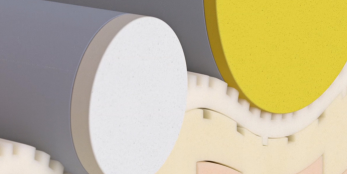GAC describes the ENO.146 as one of the most aerodynamically efficient vehicles in the world, thanks to a drag coefficient of only 0.146 (hence the name) and a NEDC (New European Driving Cycle) range of 1,000 kilometers. While a fully aerodynamic design is key to achieving such performance goals, the GAC R&D Center also uses lightweight and sustainable materials to reduce the weight of the car while raising the bar for sustainability. Covestro’s Maezio™ thermoplastic composite material is one of them.
"Mobility trends such as electrification and autonomous driving are redefining the role and function of car interiors," says Zhang Fan, Vice President of the GAC R&D Center. "There is a growing need for material solutions that are lightweight and sustainable while opening up ways to create new user experiences ranging from visual to tactile feedback."
Beyond weight savings
The backrests of the two front seats of the concept car are made of Maezioâ„¢ CFRTP, the reinforced thermoplastic composite material from Covestro. It is estimated that the composite seat backrest can save up to 50 percent in weight compared to typical metal constructions.
"Seats in the passenger compartment are an ideal target for weight savings, as they are among the heaviest parts there," says Lisa Ketelsen, head of Covestro's thermoplastic composites business. "Fibre reinforced composites are the ideal material for lightweight automotive construction, but Maezioâ„¢ can further simplify molding and streamline the manufacturing process."
In the case of a seat with a metal backrest, fittings and other attachments add to the complexity of production and assembly. Since Maezioâ„¢ is a thermoplastic material, parts and functions can be consolidated by injection molding processing. Functional structures are incorporated into the mould for shaping the backrest, reducing the number of parts and materials.









